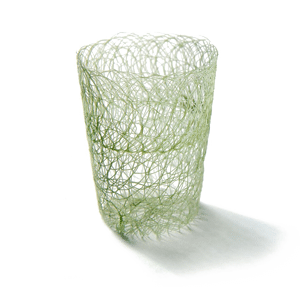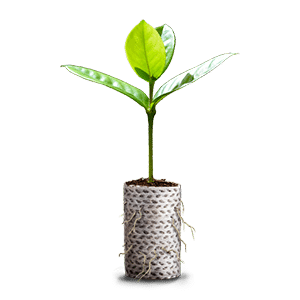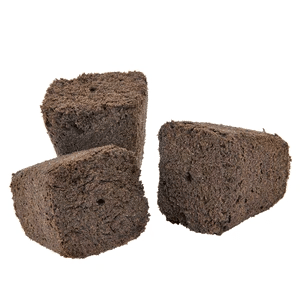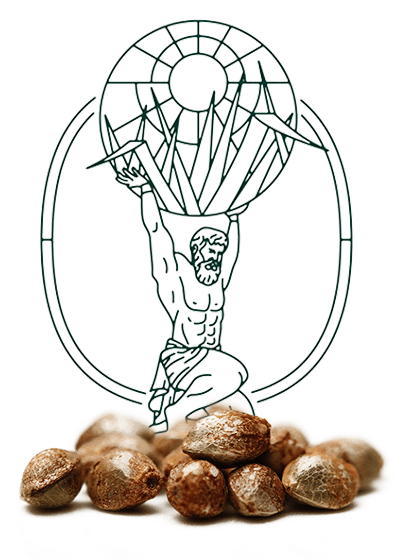Propagation Guide
An Introduction to Propagation
Successful greenhouse propagation requires careful attention to detail and consideration of many factors. Unless your farm already has a successful seedling propagation program in place, we recommend you purchase plants, especially for larger orders where the stakes are higher. Below we have made a list of things for you to consider before you sow your seeds. Our recommendations are made based on many years of experience.
Sizing Trays
We recommend a 128 cell tray if you have access to elle pots or grow coons. Otherwise, pick a tray that you have locally available and fits with your medium of choice. Consider how much greenhouse space you have when making this decision, as the 128 cell trays are 2.5x more space efficient than the 50 cell trays.
Rooting Medium
There are a ton of options out there. The most important thing is to use a floating medium, or a material that allows you to pull the plants out of the trays before they are rootbound. If you are using grow coons be sure to utilize a sterile potting mix and tamp down your seed bed firmly.
Recommended Solutions

Grow Coons

Ellepots

Root Riot Cubes

Rapid Rooter
Planting
Plant at roughly ¼ “ & gently cover seeds with soil.
Watering
When first planting the seeds, water them in heavily, though not to the point of leaving standing water in your cell tray. Keep them on the spectrum from moist to wet (not soaked or soggy!) prior to emergence. After emergence water anywhere from 1-3x day depending on
your medium and temperatures. They enjoy a wet to dry swing, so don’t keep them wet at all times. Conversely, never allow them to dry down completely.
Days to Emergence
The seeds should germinate for 48-72 hours and should be finished emerging after 6 days.
Temperature
We have found ideal germination temperature range to be 75-78° F. Heat mats are extremely
helpful in uniform and quick germination. Depending on your climate and season, a heat
mat on during the day could be too hot. However, night temperatures may be too cold. Therefore, we put heat mats on a timer so they come on at 6 pm and go off at 8 am.
Days to Transplant
Transplant as early as your equipment, labor, and the physical condition of the plants allow. If you let the plants sit in their containers too long, it can stress them into early flower, which can significantly reduce yields.
We recommend planting at 9-14 days from sowing. If you have to let the plants sit in trays for longer than is ideal, make sure they are getting watered and fertilized appropriately.
Light
Add supplemental light if it is convenient. Up to 18 hours a day of total light is appropriate when possible.
Avoiding Shock
Avoid letting your starts become rootbound. Additionally if the root ball (exposed roots) are
excessively exposed to light or handling, this can shock your plants. Transplant in cool weather.

Fertility
Feed with mycorrhizae after 72 hours. Begin feeding daily at emergence, increasing the strength of the feeding daily. Feed mycorrhiza again the day of transplant.
Planting Overages
If you need 10,000 plants in the field, sow 13,500 seeds. ie. sow 35% extra.
Remember, you will lose plants in three different ways:
-
- Some seeds will not germinate.
- Some plants will lack vigor after germination.
- Some plants will break during transplanting.
Greenhouse Pests & Diseases
Seeds have distinct advantages to clones, in that pests cannot be transmitted on seeds. If you have clones in the same area as seedlings, be conscious of pest transmission. We suggest applying RootShield to seedlings to control damping off. Additionally, avoid overwatering seedlings, as this can lead to damping off.
Timeline
Day 1 - 3
Seed Germination
- Seeds should germinate between 48 and 72 hours.
- Be sure to keep trays warm (77°) and provide supplemental light if needed.
- Plants need 16 hours of light until transplanting.
Day 4 - 6
Seed Emergence
- Seeds should finish emerging after 6 days.
- As soon as seeds have emerged, begin feeding with mycorrhizae.
- Allow a wet to dry swing with your daily watering.
Day 7 - 9
Continue Fertilizing
- Continue fertilizing the seedlings with mycorrhizae, increasing strength daily.
- Consider transplanting if conditions allow (equipment, labor, weather, seedling health, etc.)
Day 10 - 14
Prepare for Transplanting
- Fertilize with mycorrhizae again before transplanting.
- Be sure to get your plants in the ground ASAP for best result with vegetative stage of growth.
Download the PDF Here!
Rest confidently with the Atlas Seed Propagation Guide and ensure all precautionary measures are taken to begin growing brilliant plants from seed to harvest. Share your name and email to gain exclusive access to this helpful guide!
